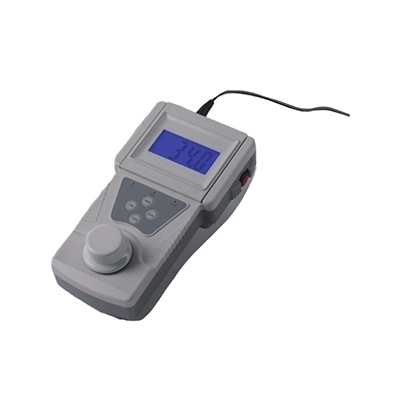What is a Turbidity Meter Used for?
Fri, Mar 01 by ATO.com
A turbidity meter is a special instrument used to measure the turbidity of water. Its principle is to use the principle of scattering or transmitting light by turbid liquid to measure. Turbidity meters are widely used in many fields. They can provide valuable information about water quality conditions and support environmental protection and the normal operation of industrial production activities. The following are specific application areas for the turbidity meter.
Application scenarios
- Water quality monitoring: Turbidity meters are widely used in the field of water quality monitoring and can be used to evaluate the clarity of tap water, drinking water, and sewage to determine whether the water body meets relevant standards. By continuously monitoring the turbidity of the water body, the turbidity meter can promptly detect abnormal changes in water quality. For example, a sudden increase in turbidity may mean that the water body is polluted.

- Sewage treatment: During the sewage treatment process, a turbidity meter can be used to monitor and control the treatment effect, detect the particulate matter content in the sewage, and guide the adjustment of the treatment process. By monitoring various stages of wastewater treatment, turbidity meters can help engineers understand the efficiency of the treatment process and optimize the treatment process.
- Industrial production: In some industrial fields, such as food processing, pharmaceuticals, etc., turbidity meters are used to monitor the quality and purity of liquid products. Turbidity meters can quickly and accurately measure the turbidity of liquids, helping manufacturers ensure product quality meets standards.
Municipal water supply: used to monitor the turbidity of tap water to ensure that the water quality meets relevant standards. - Drinking water treatment plant: During the drinking water treatment process, turbidity meters can be used to monitor water clarity to ensure drinking water safety.
- Sewage treatment plant: During the sewage treatment process, a turbidity meter can be used to monitor the effect of sewage treatment to ensure that the treated water quality meets the discharge standards.
- Comprehensive purification pool: used to monitor changes in water quality and take timely measures if abnormalities are found.
- Pulp and paper industry: used to monitor the sewage produced during the pulp and paper-making process to ensure that the treated water quality meets the discharge standards.
- Wastewater treatment plant: used to monitor the effectiveness of wastewater treatment to ensure that the treated water quality meets discharge standards.
- Feces treatment plant: used to monitor the water quality after feces treatment to ensure that the treated water quality meets the discharge standards.
- Chemical industry: used to monitor sewage produced during chemical production to ensure that the treated water quality meets discharge standards.
- Industrial wastewater treatment: used to monitor the effect of industrial wastewater treatment to ensure that the treated water quality meets the discharge standards.
- Livestock wastewater treatment: used to monitor the effect of livestock wastewater treatment to ensure that the treated water quality meets the discharge standards.
- Ecological environment: Turbidity meters can be used to monitor the turbidity of water bodies, evaluate the clarity of water bodies, understand the pollution status of water bodies, and provide a scientific basis for environmental protection.
- Disease prevention and control: Turbidity meters can be used to monitor the turbidity of water sources such as drinking water and swimming pool water to ensure water quality safety and prevent and control the spread of diseases.
- Urban domestic water: A turbidity meter can be used to monitor the turbidity of tap water to ensure the safety of drinking water for urban residents.
- Power plants: Turbidity meters can be used to monitor the turbidity of cooling water in power plants to ensure the cooling effect and the normal operation of power generation equipment.
Turbidity meters are widely used in the field of environmental protection, mainly involving water quality monitoring and sewage treatment. Specific applications are as follows:
- Sewage treatment: The application of turbidity meters in sewage treatment mainly involves monitoring and operating sewage treatment plants. In sewage treatment, turbidity meters can be used to monitor various stages of sewage treatment, such as biological reaction tanks, sedimentation tanks, etc. By monitoring turbidity, we can understand the effectiveness of sewage treatment, detect and deal with abnormalities in time, and ensure the quality and efficiency of sewage treatment.
- Drinking water safety: Turbidity meters can also be used for drinking water safety monitoring to ensure that drinking water meets relevant national or regional standards. It can monitor the turbidity, suspended solids, and other indicators of tap water, detect water quality problems in time, and protect people's health.
- Industrial wastewater treatment: Wastewater generated during industrial production processes also needs to be monitored and treated. Turbidity meters can be used to monitor suspended solids, oil stains, and other impurities in industrial wastewater, guide the adjustment and optimization of wastewater treatment processes, and reduce environmental pollution.
To sum up, turbidity meters are widely used in the field of environmental protection, involving water quality monitoring, sewage treatment, drinking water safety, and industrial wastewater treatment. By using a turbidity meter, we can better understand water quality conditions and provide a scientific basis for environmental protection. By using a turbidity meter, we can better understand water quality conditions and provide a scientific basis for environmental protection.

